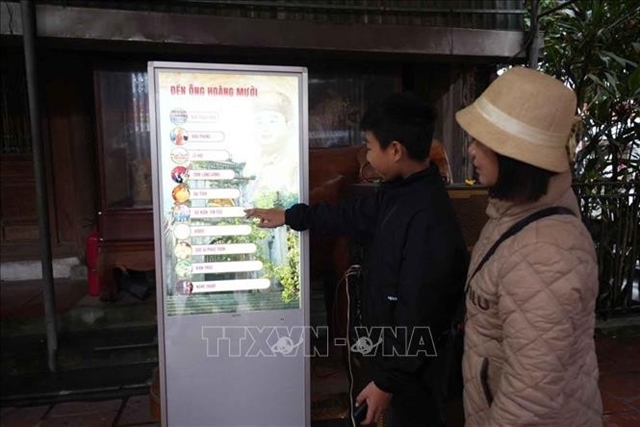 Society
Society


|
| An Information Technology class for disabled students at the Functional Rehabilitation and Vocational Training School for People with Disabilities in Tiên Lữ District in the northern province of Hưng Yên. VNA/VNS Photo Anh Tuấn |
HÀ NỘI – People with disabilities often have difficulties accessing technology, requiring mechanisms and policies enabling them to access technology early, so that they will have better jobs in the future and contribute to society, experts said on the Việt Nam Day of Persons with Disabilities (April 18).
Việt Nam currently has over seven million people with disabilities, accounting for over 7 per cent of the population aged 2 and above. Of which, nearly 29 per cent are severely or especially severely disabled.
In the ten years since ratifying the United Nations Convention on the Rights of Persons with Disabilities, and over ten years since the Law on Persons with Disabilities came into effect, Việt Nam has continuously worked to improve accessibility for persons with disabilities.
Digital transformation has made significant strides in many areas, contributing to promoting the rights and integration of persons with disabilities. However, there is a need for mechanisms and policies to create conditions for persons with disabilities to become familiar with technology at an earlier age.
Ma Văn Đại was visually impaired from a young age. Thanks to participating in IT classes organised by the Việt Nam Blind Association, Đại can use computers and phones for daily life and work. Digital technology helps him use utilities such as booking cars, participating in e-commerce platforms and online banking transactions.
Đại said his ability to access information technology is faster than other visually impaired people, but he still faces many obstacles when conducting digital transactions.
“When visually impaired people use applications, they often swipe their fingers on the screen, listen to the screen reader application read the names of icons and then touch the icon they are looking for. However, there are some applications that do not read when visually impaired people touch them, causing many difficulties in using them,” he said.
Đại said registering an account on social networks was quite a challenge for him.
“Some websites require entering captcha codes often used in registration forms, login, account creation. The screen reader application can’t read these out, so visually impaired people have to rely on assistance from sighted people," he shared.

|
| Visually impaired people experiencing assistive applications at the barrier-free smart city exhibition for people with disabilities in HCM City. VNA/VNS Photo Thanh Vũ |
Nguyễn Trường Thanh, a computer science teacher at the Việt Nam Blind Association, said many visually impaired people cannot be independent but must rely on family members for support when interacting with banking apps.
Recently, to enhance security, many banks have blocked access rights to assistive technologies on phones, completely disabling screen reading when using banking apps. This has caused difficulties for visually impaired people when they want to interact with banking apps.
“Unable to interact, visually impaired individuals must rely on others to input account information, PIN codes, which leads to more incidents of account information exposure,” he said.
As public services are increasingly digitised online, administrative procedures become more convenient, saving more time for the general population. However, the disabled, especially visually impaired people, face difficulties in keeping up with technology.
Ngô Thị Huyền Minh, CEO of Nghị Lực Sống Joint Stock Company, stated that the disabled face more difficulties when conducting online transactions due to their lower initial accessibility, thus their ability to understand documents or instructions is also limited.
Minh said there is a need to further improve instructions or create more understandable guidelines for the disabled, helping them easily use online public services.
Đinh Việt Anh, Vice President of the Việt Nam Blind Association, shared that the Ministry of Information and Communications has issued Circular 26/2020/TT-BTTTT regulating the application of standards and technologies supporting access for people with disabilities to use information and communication products and services.
Anh said that the circular should be mandatory for all agencies and organisations when building websites to ensure accessibility standards for the visually impaired and the disabled community to access information in the digital environment.
Đặng Văn Thanh, Permanent Vice President of the Vietnam Federation on Disability (VFD) stated that the VFD, along with its 50 member organisations, regularly organise IT classes to support people with disabilities in accessing technology.
In the future, the VFD will promote teaching information technology and providing training in online sales skills for people with disabilities. The VFD will also collaborate with the Vietnam Software and Digital Content Industry Institute under the Ministry of Information and Communications to develop software data on people with disabilities.
Based on this data, the VFD will propose and promote the revision of policies to support vulnerable groups in the best possible way, he said. – VNS




